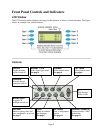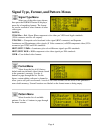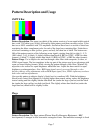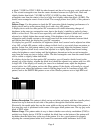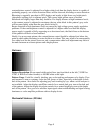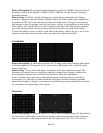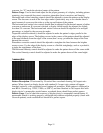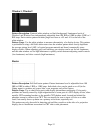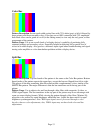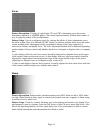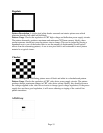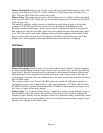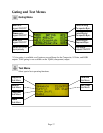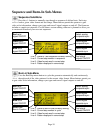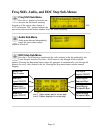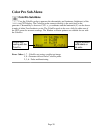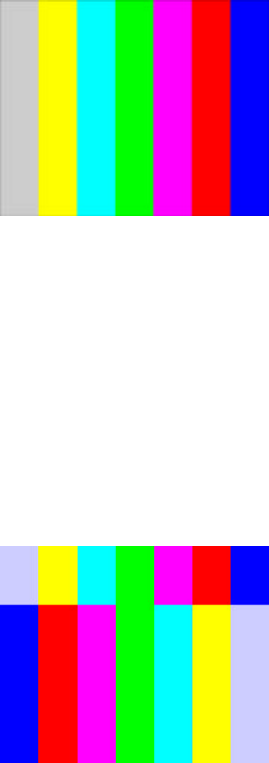
Page 13
Color Bar
Pattern Description: Seven equal-width vertical bars with 75% white (gray) at left, followed by
three primary and three seconday colors. Color bars are at 100% saturation with 75% amplitude.
Individual colors can be gated on or off (in the Gating menu) to view only the red, green, or blue
components of the pattern.
Pattern Usage: Use as an overall check of a display device’s capability of producing fully
saturated primary and secondary colors. Especially helpful in detecting full or partial loss of
colors in an older display. Also good as a reference input signal when troubleshooting and signal
tracing color amplifier or color demodulator problems within a display device.
Split Bar
Pattern Description: Top one-fourth of the pattern is the same as the Color Bar pattern. Bottom
three-fourths of the pattern repeats the upper bars, except the bars are flipped from left to right.
This places all the bars containing blue above/below their complementary colors, similar to the
SMPTE Bar pattern. The major difference is that the bar transitions are in the top part of the
picture.
Pattern Usage: Use to adjust color and hue through a blue filter with composite, S-video, or
YPbPr signal inputs. The bar transitions in the top part of the picture may be an advantage with
some on-screen-display formats. While viewing the pattern through a blue filter (Wratten 50),
adjust the color control for equal brightness white/blue bars. Adjust the hue control for equal
brightness cyan/magenta bars. Note: RGB input signals aren’t processed through a color
decoder, thus no color adjustments; also, YPbPr inputs may not have both color and hue
adjustments.



